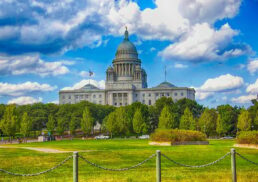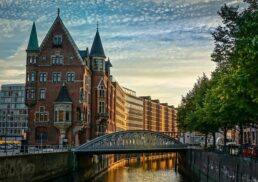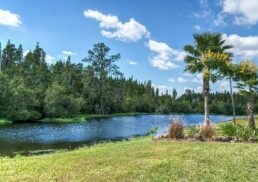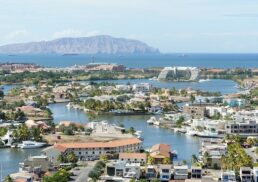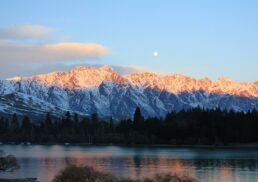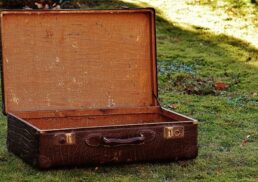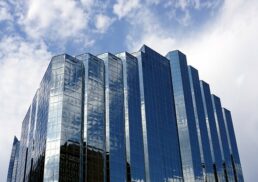Thinking of visiting Melbourne in Victoria, Australia? This guide has you covered. Find out about top attractions, historical sites, and travel tips to make the most of your trip to this vibrant city in Australia, Melbourne, Victoria.
Table of Contents
Key Takeaways
Melbourne’s Central Business District is a vibrant area showcasing a blend of historic and modern architecture, characterized by significant attractions such as Federation Square and the ANZ Bank building.
The city has a rich history marked by three key periods: British colonization, the Victorian Gold Rush, and post-World War II expansion, which influenced its cultural and demographic landscape.
Melbourne is recognized for its diverse culinary scene, emphasizing high-quality coffee and innovative dining experiences, reflective of its multicultural population.
Explore Melbourne’s Central Business District (CBD)
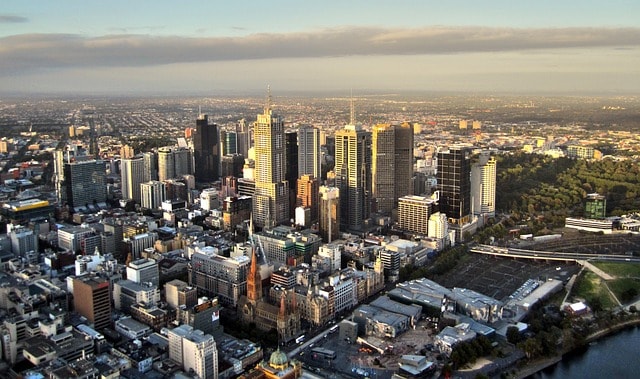
Central Melbourne, particularly Melbourne’s Central Business District (melbourne cbd), is a dynamic area where history and modernity coexist harmoniously. The CBD’s skyline has been transformed with the addition of 34 new skyscrapers between 2010 and 2020, creating a striking contrast with the older buildings that define the city’s unique urban atmosphere in the central city.
Federation Square stands as a cultural precinct and a major public space, drawing both locals and tourists to its lively events and exhibitions. Don’t miss the ANZ Bank building on Collins Street, renowned for its gilded ceilings, which exemplifies the city’s architectural diversity.
From major museums, theatres, and galleries to boutique shops and restaurants, Melbourne’s central business district is a hub of activity and a testament to the city’s vibrant spirit.
Melbourne’s Rich History
Melbourne’s history is a fascinating narrative that weaves through its central business district, reflected in the blend of historic and modern buildings. Officially recognized as a settlement in 1835, when John Batman negotiated a treaty with Aboriginal elders, the city Melbourne served has grown from a modest township to one of the major Australian cities.
This historical journey can be explored further through three significant periods: British Colonisation, the Victorian Gold Rush, and Post-WWII Expansion.
British Colonisation
The roots of Melbourne’s settlement date back to 1835, with the original native name for the settlement near Melbourne being Dootigala. By 1836, the population was a mere 177, reflecting the early stages of British colonisation. The layout of the original settlement was designed in a rectangular pattern, a format still evident in parts of the city today.
The city’s development was influenced by the geology and drainage of the land, leading to eastward urban growth. Early suburbs like Carlton, Collingwood, and St. Kilda began to take shape, laying the foundation for the Melbourne we know today.
Victorian Gold Rush
The discovery of gold in Victoria in 1851 marked a pivotal moment in Melbourne’s history. The population surged from 25,000 to around 80,000 within three years, transforming the city into a bustling metropolis. This rapid growth continued, and by 1865, Melbourne had overtaken Sydney in population.
The economic boom from the gold rush not only increased Victoria’s population but also laid the groundwork for Melbourne’s future prosperity.
Post-WWII Expansion
Post-World War II, Melbourne experienced significant demographic and economic changes. The influx of immigrants, particularly from Southern Europe, played a crucial role in shaping the city’s cultural landscape. This period also saw the evolution of Melbourne’s coffee culture, heavily influenced by Italian and Greek immigrants.
Urban planning underwent significant changes as the population grew, with 90 percent of residents living within 10 miles of the CBD in the 1940s. The lifting of height limits in 1958 facilitated a dramatic transformation of the city’s skyline, heralding the modern Melbourne we see today.
Must-Visit Attractions in Melbourne
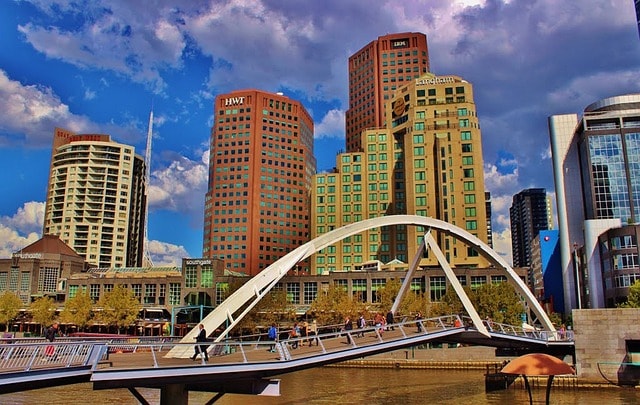
Melbourne’s attractions are as diverse as its history and culture. From architectural marvels to natural wonders, the city offers numerous must-visit sites that cater to all interests. Collins Street, known for its shopping and the historic Block Arcade, is a bustling area that showcases Melbourne’s blend of old and new.
St. Paul’s Anglican Cathedral stands as an iconic building with stunning architecture that has developed over centuries. Beyond the city, the Great Ocean Road in Regional Victoria offers breathtaking landscapes and wildlife watching opportunities, making it a perfect day trip destination.
Royal Exhibition Building
The Royal Exhibition Building, a UNESCO World Heritage site, is a stunning example of 19th-century architecture with its iconic dome. Recently, the dome area has been made accessible, offering unique views of the Melbourne skyline.
This building has hosted various international exhibitions and events since the late 19th century, underscoring its historical significance.
Yarra River
The Yarra River is a central feature of Melbourne, offering stunning views of the city skyline, especially at sunset. The river’s banks are lined with parks and gardens, providing a tranquil escape from the bustling city. Visitors can enjoy various activities such as kayaking, paddleboarding, and leisurely boat cruises, or simply bike along dedicated paths to soak in the scenic beauty.
Iconic attractions like Federation Square and the Royal Botanic Gardens are located nearby, adding to the river’s appeal.
Phillip Island
Phillip Island, just a 90-minute drive from Melbourne, is renowned for its rich wildlife and stunning coastal landscapes. The island is famous for the nightly parade of little penguins, a spectacle that attracts numerous visitors. Other wildlife experiences include viewing koalas at the Koala Reserve and watching seals at Seal Rocks.
The island’s rugged cliffs, pristine beaches, and scenic walking trails make it a perfect day trip destination from Melbourne.
Food and Drink in Melbourne
Melbourne’s culinary scene is a reflection of its cultural diversity, with flavors and influences from over 140 cultures. The city is known for its hip food scene, blending modern dining with traditional influences, making it a renowned foodie destination.
From charcoal-grilled pork belly at Prahran Market to the variety of dining options on De Graves St and Hardware Lane, Melbourne’s food offerings are both diverse and delicious.
Coffee Culture
Melbourne’s vibrant coffee culture is a notable feature of its culinary scene, emphasizing high-quality brews and unique café experiences. Areas like Fitzroy and Carlton are well-known for catering to vegetarian and vegan options, adding to the city’s reputation as a coffee lover’s paradise.
The emphasis on top-notch coffee has become an integral part of Melbourne’s cultural identity.
Top Restaurants
Melbourne’s dining scene includes a range of restaurants from luxurious to casual, each offering innovative dishes that reflect the city’s multicultural population. The experience is not just about the food but also the ambiance and culinary creativity present at various eateries.
Whether you’re dining at a high-end restaurant or a casual eatery, Melbourne’s top restaurants promise a memorable culinary experience.
Melbourne’s Public Transport System
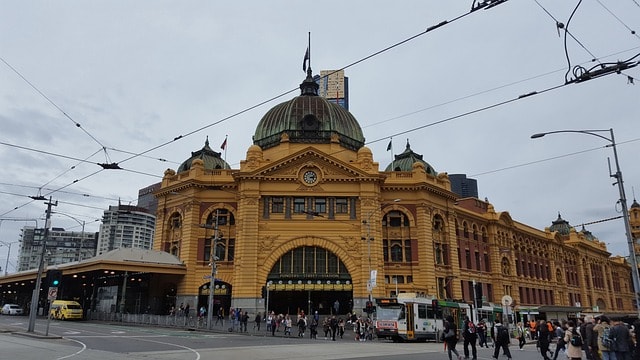
Navigating Melbourne is a breeze thanks to its integrated public transportation system, which includes electric trains, buses, and trams. Public transport is convenient and accessible, making it unnecessary to have a car to explore central Melbourne.
This system effectively connects the city to its suburbs, ensuring easy travel for both residents and visitors.
Trams and Train Stations
Melbourne’s trams are a primary mode of transport in the inner suburbs, offering free rides within the central business district. The City Circle tram and over 20 other routes provide extensive coverage.
The City Loop light railway connects major train stations. These stations include Southern Cross, Flagstaff, Melbourne Central, Parliament, and Flinders Street, facilitating city navigation.
Melbourne Airport
Melbourne’s main international gateway is Tullamarine Airport (MEL), located about 22 kilometers northwest of the city center. This major hub serves both domestic and international flights, making it an essential part of Melbourne’s connectivity.
Avalon Airport (AVV) is another airport serving the greater Melbourne area, offering additional travel options.
Melbourne’s Suburbs and Surrounding Areas
Melbourne’s suburbs and surrounding areas are as diverse as the city itself, offering a range of experiences from vibrant cultural scenes to serene natural landscapes. Post-war immigration significantly contributed to Melbourne’s multicultural character, with neighborhoods reflecting this diversity in the Melbourne statistical division.
The city’s extensive transport network, including the world’s largest tram system, makes it easy to explore these areas.
Inner Melbourne
Inner Melbourne is characterized by vibrant neighborhoods that boast a rich cultural scene. Areas like St. Kilda offer a blend of nightlife, cafes, and beach access, while Fitzroy is celebrated for its trendy dining and drinking establishments.
This mix of historic architecture and contemporary amenities makes Inner Melbourne a dynamic place to explore.
Outer Suburbs
The outer suburbs of Melbourne are increasingly popular due to their affordability and family-friendly environments. These areas are experiencing growth with new developments and expanding infrastructure, making them attractive places to live and visit.
Regional Victoria
Regional Victoria offers cities like Ballarat and Bendigo, rich in history and cultural offerings from the gold rush era. These areas provide unique attractions and a glimpse into Victoria’s past, making them worth a visit for those interested in history and culture.
Best Time to Visit Melbourne
Melbourne’s variable weather can make planning a visit challenging, but certain times of the year are ideal for experiencing the city. The best periods to visit are from March to May or September to November, when the weather is mild and dry.
These months offer comfortable temperatures and fewer crowds, making it perfect for outdoor activities and sightseeing.
Summer Months
The peak summer months of January and February are known for their hot and sunny weather, making it ideal for beach activities in suburbs like St Kilda and Williamstown. Melbourne’s summer also features notable events like the Australian Open tennis tournament, attracting many visitors.
The Lunar New Year and Midsumma Pride Festival are other highlights during this time.
Mild Seasons
Autumn, from March to May, is a wonderful time to visit Melbourne with mild weather and fewer crowds. This season offers a pleasant climate for outdoor activities and sightseeing, ensuring a relaxed and enjoyable experience.
The comfortable temperatures make it ideal for exploring the city’s many attractions without the hustle and bustle of peak tourist season.
Arts and Culture
Melbourne’s vibrant arts community is a cornerstone of the city’s cultural identity. The Arts Precinct on Southbank is a key area for major art exhibitions and performances. The city’s arts scene includes a variety of institutions, from large galleries to smaller independent venues, showcasing everything from traditional artworks to contemporary street art.
Springtime in Melbourne is particularly lively with cultural events like comedy and fashion festivals.
Victorian Arts Centre
The Victorian Arts Centre, located in central Melbourne, is a prominent cultural hub that plays a significant role in the city’s arts scene. It houses several resident companies and features a diverse range of performances, including theatre, music, and dance.
This center is a must-visit for anyone looking to experience the rich cultural offerings of Melbourne.
Melbourne Symphony Orchestra
The Melbourne Symphony Orchestra (MSO) is a flagship professional symphony orchestra in Australia, renowned for its high-quality performances and cultural significance. The MSO has a rich history of collaboration with renowned composers and conductors, significantly influencing Melbourne’s status as a prominent cultural hub.
With a diverse repertoire ranging from classical to contemporary works, the MSO plays an essential role in promoting music appreciation in the city.
Government and Education
Melbourne’s governance and educational institutions are integral to its development and functioning. On 1 January 1901, Melbourne became the seat of government for the Commonwealth of Australia, marking a significant moment in its history. The governance structure is influenced by both local councils and the state government, ensuring that community needs are met efficiently.
Local Government
Local councils in Melbourne manage various services and facilities for the community, supported by over 30 councils that address local needs. These councils raise revenue through property taxes (rates) and use compulsory voting conducted by mail to elect councillors.
This governance structure ensures that the diverse needs of Melbourne’s residents are met.
Universities
Melbourne is home to several prominent universities that significantly contribute to the city’s intellectual landscape. Established in 1853, the University of Melbourne is one of the oldest and most prestigious institutions.
These educational institutions not only offer a variety of degrees but also foster vibrant academic communities, enriching Melbourne’s educational and cultural environment.
Recreation and Sports
Recreation and sports are a vital part of life in Melbourne, with numerous facilities and events that cater to diverse interests. The Yarra River, with its recreational activities like kayaking and riverside picnics, is a popular spot for both locals and visitors.
Melbourne is also known for its outdoor sports, including cricket and Australian Rules football, which are played in various facilities throughout the city.
Public Parks
Melbourne’s public parks offer extensive green spaces perfect for relaxation and recreation. The Royal Botanic Gardens (RBG) is the most famous park, offering a serene escape in the heart of the city.
Royal Park, one of the largest parks in Melbourne, provides vast open spaces and diverse wildlife, making it a favorite for outdoor activities.
Major Sporting Events
Melbourne is renowned for hosting significant sporting events that draw attention from around the world. The Australian Open, one of the four Grand Slam tennis tournaments, is held annually in Melbourne. The Melbourne Cup, a prestigious horse racing event, takes place at Flemington Racecourse every November, showcasing the city’s passion for sports.
Events at venues like the Melbourne Cricket Ground (MCG) witness full-on crowd engagement, enhancing the atmosphere of the sporting experience.
Summary
Melbourne is a city that seamlessly blends history, culture, and modernity, offering a wealth of experiences for visitors. From the architectural marvels of its central business district to the vibrant arts scene and diverse culinary delights, there is always something to explore. Whether you’re drawn to the historic charm, the bustling modernity, or the scenic natural beauty, Melbourne promises to captivate and inspire. Visit Melbourne to experience a city that truly has it all.
Frequently Asked Questions
What is the best time to visit Melbourne?
The optimal times to visit Melbourne are March to May and September to November, as the weather during these months is typically mild and dry. This ensures a more pleasant experience for visitors.
What are some must-visit attractions in Melbourne?
Melbourne’s must-visit attractions include the Royal Exhibition Building, the scenic Yarra River, and Phillip Island, celebrated for its rich wildlife and stunning landscapes. These sites offer unique experiences that highlight the city’s charm.
How can I navigate Melbourne’s public transport system?
To navigate Melbourne’s public transport system effectively, obtain a Myki card for services outside the CBD free zone, and familiarize yourself with the electric trains, buses, and trams available. This will ensure a smooth travel experience throughout the city.
What makes Melbourne’s food and drink scene unique?
Melbourne’s food and drink scene is unique due to its rich cultural diversity, featuring flavors from over 140 cultures, alongside a thriving coffee culture and a trendy food environment. This blend creates a dynamic and exciting culinary experience that stands out.
What are some popular public parks in Melbourne?
Notable public parks in Melbourne include the Royal Botanic Gardens and Royal Park, both renowned for their expansive green spaces and varied recreational activities.
